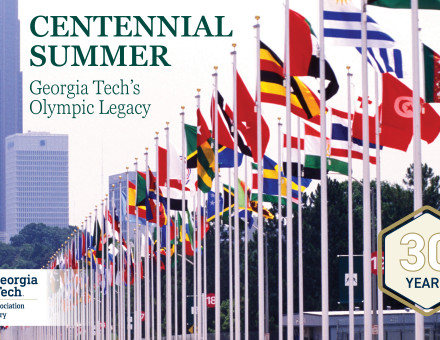
Computing Approach May Save At-Risk Carnival Costume Making Tradition

Costumes in the annual Trinidad and Tobago Carnival often inspire awe because of their extravagance, flamboyancy, and — for some dancing sculptures — their size.
Some costumes are so large and expansive, it makes the person wearing them appear as if they are carrying an unbelievably heavy load on their shoulders. Built on techniques in the traditional craft of wire-bending, these costumes and dancing sculptures are dynamic and performative and decorated with painted textiles, feathers, and beads.
Wire-bending has been a traditional method of constructing costumes for the Trinidad and Tobago Carnival since the 1930s, but Vernelle A.A. Noel, a joint professor with the School of Interactive Computing in the College of Computing and School of Architecture in the College of Design, has been conducting research on this at-risk practice.
Three masters of the craft have passed away since Noel began her research in 2012. Most recently, Albert Bailey, one of the masters who assisted Noel with her research, passed away in September. Those who are still alive are getting older.
“The craft is dying because of aging practitioners, the absence of a system to pass this knowledge on, and more,” Noel said. “There is currently no system of pedagogy for it to be passed on, so this was the first problem I addressed in my research. How do we document and make explicit this tacit knowledge in wire benders so that it can be shared and taught to others?
“This material practice is a language. For the continued telling of histories and cultures, these languages, which are ways of understanding and describing the world, should not disappear.”
Noel believes it’s possible to revive the craft through computational approaches.
Noel will be hosting her first physical exhibition, Design and Making in the Trinidad Carnival: Histories, Re-imaginations, and Speculations of Computational Design Futures, from Nov. 17 to Feb. 28, 2023, at the Price Gilbert Memorial Library at Georgia Tech.
The exhibition is funded by the Graham Foundation for Advanced Studies in the Fine Arts and showcases wire-bending through traditional and technological forms of making.
“Specifically, I’m looking at wire-bending and how we can rethink craft, computation, and computers,” Noel said.
Noel, who was born in Trinidad and Tobago, began her research in wire-bending during her graduate studies.
“I grew up looking at Carnival,” she said. “I always knew it was deep and rich, but during my graduate studies, I started to look at the scholarly side of Carnival and realized there was a gap in scholarship in terms of design,” she said. “I wanted to understand, unpack, and reveal what was there.
“At first, I focused more on the design and fabrication side of things, but it became much more than that. I’m a constant observer of how cultures change. The question started with an aesthetic change that I noticed that was different from the aesthetics of the past. I noticed that the aesthetics of Carnival were trending toward bikinis, beads, and feathers, and I wanted to know why. My hypothesis was that it was a design problem among the people, processes, knowledge, tools, methods, economies, and more.
Traditionally, the practice of wire-bending is a male-dominated practice, but Noel believes integrating computer technologies in the craft might make it more accessible to children, women, and those with physical limitations.
As she designed and produced her first exhibition, Noel said she had to think about what she wanted spectators to walk away with after viewing it.
“Craft practices can help us rethink technology, and technology can help us rethink craft practices,” she said. “The work also gives voice to the contributions of cultures and people who are often excluded from discourses in computation and technology.
“I’m looking forward to hearing how the work is received. I want people to feel the joy I felt curating, designing, and making it. I want them to be curious, to think across worlds and disciplines. I want them to acknowledge and appreciate this history.”


